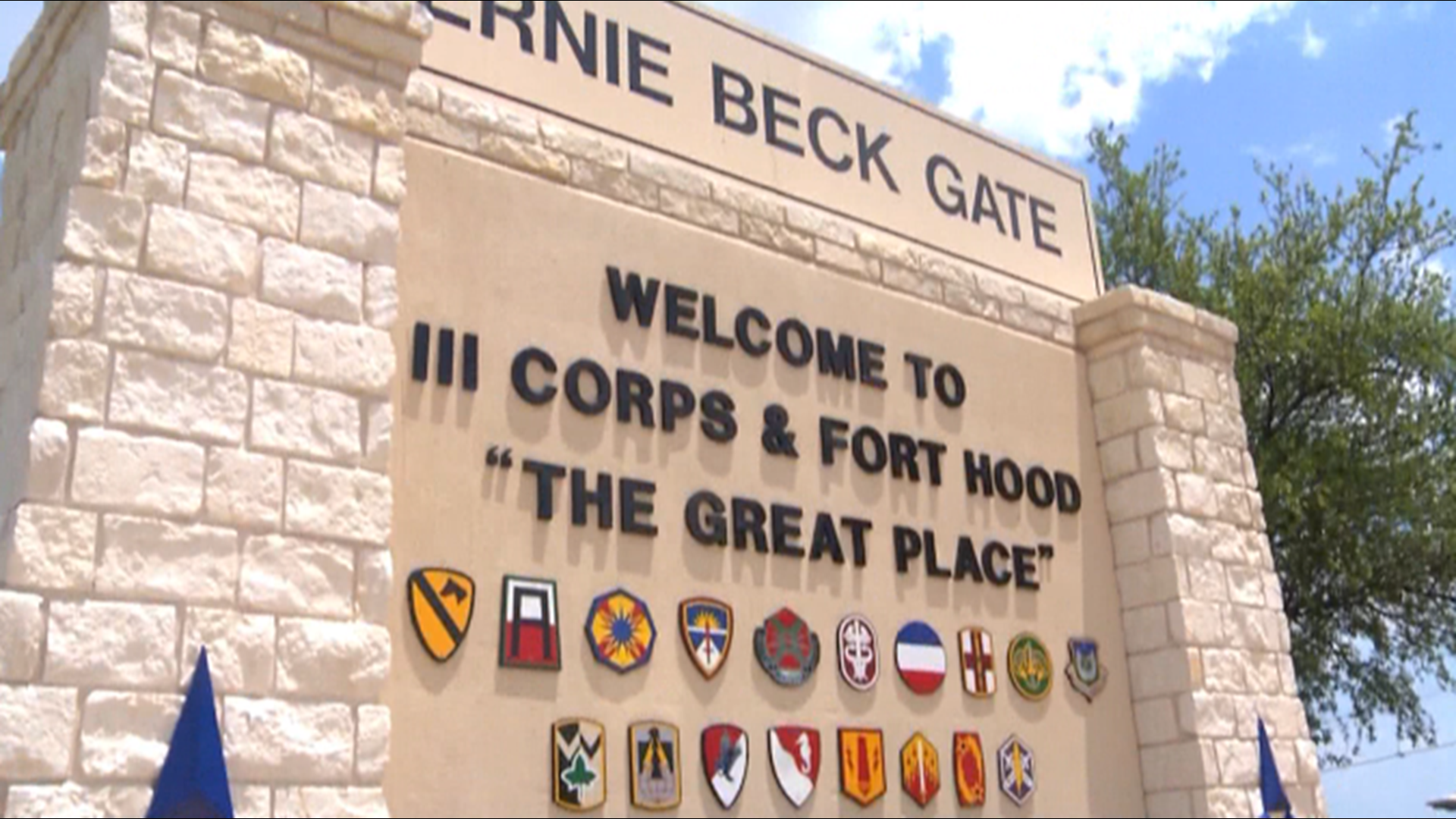FORT HOOD, Texas — Fort Hood could be facing a name change with the Senate's override of President Donald Trump's veto of the National Defense Authorization Act.
Fort Hood and nine other Army posts -- named after Confederate leaders -- could soon be renamed according to the new defense bill.
The $740 billion dollar National Defense Authorization Act was previously passed by both the House and Senate, but president Donald Trump vetoed it on December 23. The House voted to override the veto and now the military spending bill, which includes a 3% pay raises for military members, was passed in the Senate on Saturday before Congress adjourns its current session.
In 1942 Fort Hood was named after confederate general John Bell Hood, a military leader who fought for the losing southern side.
U.S. Rep. Don Bacon of Nebraska believes recent instances of racial violence and racism have underscored the immediate need for change.
“Our military bases should bear the names of America’s war heroes who went above and beyond to answer the call of duty, and who represent the best ideals of our republic, such as medal of honor and purple heart recipients, or other national heroes," Rep. Bacon said.
With the bill is passed on Saturday, Fort Hood and the other nine military installations named after Confederate leaders are set to be renamed within three years.
According to a release from Rep. Bacon, the provision forms the National Commission of Modernizing Military Installation Designations, which will be made up of individuals appointed by service secretaries as well as members of Congress. The commission will review and make recommendations for renaming installations and department property which have designations "not in line with the values of this country or the mission of the United States military."
Here is a list of military posts facing possible name changes:
- Camp Beauregard (1917) Pineville, Louisiana, a Louisiana National Guard installation named for Louisiana native and Confederate General Pierre Gustave Toutant Beauregard.[3]
- Fort Benning (1917), Columbus, Georgia, named after Henry L. Benning, a brigadier general in the Confederate States Army.
- Fort Bragg (1918), in North Carolina, named for Confederate General Braxton Bragg.
- Fort Gordon (1917), Grovetown, Georgia, named in honor of John Brown Gordon, who was a major general in the Confederate army.
- Fort A.P. Hill (1941), Bowling Green, Virginia, named for Virginia native and Confederate Lieutenant General A. P. Hill.
- Fort Hood (1942), in Killeen, Texas, named after Confederate General John Bell Hood, who is best known for commanding the Texas Brigade during the American Civil War.
- Fort Lee (1917), in Prince George County, Virginia, named for Confederate General Robert E. Lee.
- Fort Pickett (1942), Blackstone, Virginia, a Virginia National Guard installation named for Confederate General George Pickett.
- Fort Polk (1941), Leesville, Louisiana, named in honor of the Right Reverend Leonidas Polk, an Episcopal Bishop and Confederate General.
- Fort Rucker (1942), in Dale County, Alabama, named for Edmund Rucker, a colonel appointed acting brigadier general in November 1864.


